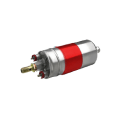The Ultimate Guide to Diagnosing and Fixing Transmission Fluid Leaks
Transmission fluid is a critical element that sustains your vehicle's transmission system's health and performance, ensuring smooth gear shifts and efficient power delivery. However, leaks are a common issue that can lead to significant consequences if neglected. These leaks can cause premature wear on transmission components, reduce fuel efficiency, and even result in complete system failure if not addressed promptly. Therefore, it's crucial for car owners to be able to identify transmission fluid leaks, understand their root causes, and grasp the associated repair costs. This comprehensive guide aims to provide a deep understanding of transmission fluid leaks, equipping you with the knowledge needed to keep your vehicle in top condition and avoid expensive repairs in the future.
How to Diagnose a Transmission Leak
Identifying and addressing a transmission fluid leak promptly is crucial for maintaining your vehicle's health. Fortunately, transmission fluid's distinct bright red color makes it relatively easy to spot compared to engine oil, which tends to be brown or black. If you observe a reddish puddle or droplets forming beneath your vehicle, especially around the transmission area, it's a strong indication of a transmission fluid leak. However, signs of a leak may not always be obvious. Other subtle yet significant indicators include
Slipping Gears: When your vehicle's transmission struggles to maintain seamless gear transitions, it may be a warning sign that the fluid levels are running low. This can cause the gears to slip in and out of place, leading to an uneven and unpredictable driving experience.
Hesitant Acceleration: If you notice a lag or hesitation in your vehicle's acceleration, especially when shifting gears, it could be a sign that the transmission is not receiving the necessary lubrication and pressure. This can result in a sluggish response to throttle input, making your vehicle feel less responsive and less powerful.
Acrid Burning Smell: The presence of a pungent, acrid burning odor emanating from under the hood can be a distressing indication of overheating transmission components. This unpleasant smell is often a consequence of low transmission fluid levels or contamination, which can lead to excessive heat buildup and damage to critical transmission parts.
Identifying these warning signs in a timely manner is crucial in preventing further deterioration of your transmission system. By doing so, you can potentially avoid costly repairs down the line. Regular monitoring for signs of leaks and prompt attention to any issues that arise are essential in maintaining the health and performance of your vehicle's transmission, ensuring a smooth and trouble-free driving experience.
The Most Common Reason for Transmission Fluid Leak
Transmission fluid leaks are typically caused by the deterioration of seals and gaskets within the transmission system, which can degrade over time due to heat, pressure, and regular wear and tear. These vital components are prone to damage, leading to fluid leaks. Moreover, leaks can also result from a damaged transmission pan or a loose pan bolt. The transmission pan, being susceptible to road debris or accidental damage during maintenance, can develop cracks or holes, allowing fluid to escape. Similarly, a loose pan bolt can create an opening for fluid leakage.
How to Tell if a Car is Leaking Oil or Transmission Fluid
Correctly distinguishing between an oil leak and a transmission fluid leak is a vital step in the troubleshooting process. Fortunately, several key differences in appearance, smell, and location can guide you in making an accurate diagnosis, ensuring that you target the correct problem and apply the appropriate solution.
Transmission Fluid Characteristics: Transmission fluid is easily identifiable due to its vibrant color, which is typically a bright red or green, a stark contrast to the amber to dark brown color of engine oil. Furthermore, transmission fluid is often accompanied by a distinct sweet, slightly chemical-like aroma, which is noticeably different from the more pungent, earthy, or musky smell associated with engine oil.
Engine Oil Distinctions: In contrast, engine oil exhibits distinct visual and olfactory characteristics that set it apart from transmission fluid. Its color spectrum spans from amber to dark brown, a notable departure from the bright hues of transmission fluid. Additionally, engine oil is often accompanied by a more pronounced, earthy, or musky aroma, which is readily distinguishable from the sweet, chemical-like scent of transmission fluid.
Leak Location Patterns: The location of the leak on your driveway or garage floor can also provide valuable insights. Transmission fluid leaks typically occur in the vicinity of the transmission system, manifesting toward the middle or front of the vehicle. Conversely, engine oil leaks often appear closer to the rear of the engine, following the path of the oil drain plug or other engine components. By observing the leak's location, you can gain a better understanding of its origin and take targeted action to address the issue.
By being mindful of these distinct visual and olfactory characteristics, you can quickly and accurately diagnose the type of leak, whether it's transmission fluid or engine oil. This prompt identification enables you to take targeted corrective measures, thereby ensuring the continued optimal performance and longevity of your vehicle.
Cost to Diagnose and Fix a Transmission Leak
The cost of diagnosing a transmission leak can vary, with some repair shops offering this service at no charge if you opt to have the repair done with them. As for the repair itself, the average cost to fix a transmission fluid leak ranges from $100 to $500, with the final cost largely dependent on the specific location and cause of the leak, as well as the make and model of your vehicle.
Is it OK to Drive with a Transmission Leak?
Although it might be tempting to overlook a transmission leak and continue driving, this approach is strongly discouraged. Neglecting to address a transmission leak can have severe and far-reaching consequences for your vehicle's transmission system.
Operating a vehicle with low transmission fluid levels can lead to a cascade of problems, including:
Transmission Overheating: Insufficient fluid can cause the transmission to overheat, leading to accelerated wear on components and potentially catastrophic damage.
Increased Friction: Low fluid levels can result in increased friction between moving parts, further exacerbating the wear and tear on the transmission.
System Failure: If left unchecked, a transmission leak can ultimately culminate in complete system failure, necessitating a costly and time-consuming replacement.
It is crucial to address a transmission leak promptly to prevent these extensive and expensive damages. By taking swift action, you can minimize the risk of further damage, reduce repair costs, and ensure your vehicle remains in optimal operating condition.
Common Transmission Leak Locations
Transmission fluid can escape from various points within the system, making it essential to pinpoint the exact location of the leak for an effective repair.
Some of the most common areas where transmission fluid leaks occur include:
Input and Output Shaft Seals: The seals surrounding the input and output shafts can deteriorate over time, allowing fluid to escape.
Pan Gasket: The gasket that seals the transmission pan can become damaged or worn, creating an opening for fluid to leak out.
Fluid Lines: The lines that transport transmission fluid throughout the system can develop cracks or holes, leading to leaks.
Torque Converter: The torque converter, which connects and disconnects the engine from the transmission, can also be a source of leaks if its seals or bearings fail.
Leveraging Professional Help: Instant Car Fix
Addressing a transmission leak doesn't need to be overwhelming. Instant Car Fix offers expert diagnostic services aimed at identifying the root cause of your transmission leak and providing effective solutions to resolve it. With professional assistance, you can have confidence that your vehicle is in capable hands, and you're making informed decisions regarding its maintenance and repair.
In conclusion, promptly identifying and addressing a transmission leak can save you from encountering more significant and costlier problems in the future. By recognizing the signs of a leak, understanding common causes, and being aware of associated repair costs, you'll be better prepared to take swift action. Remember, when uncertain, consulting with a professional ensures your vehicle remains reliable and road-worthy.
Verified
Verified
Verified
Verified
Verified































